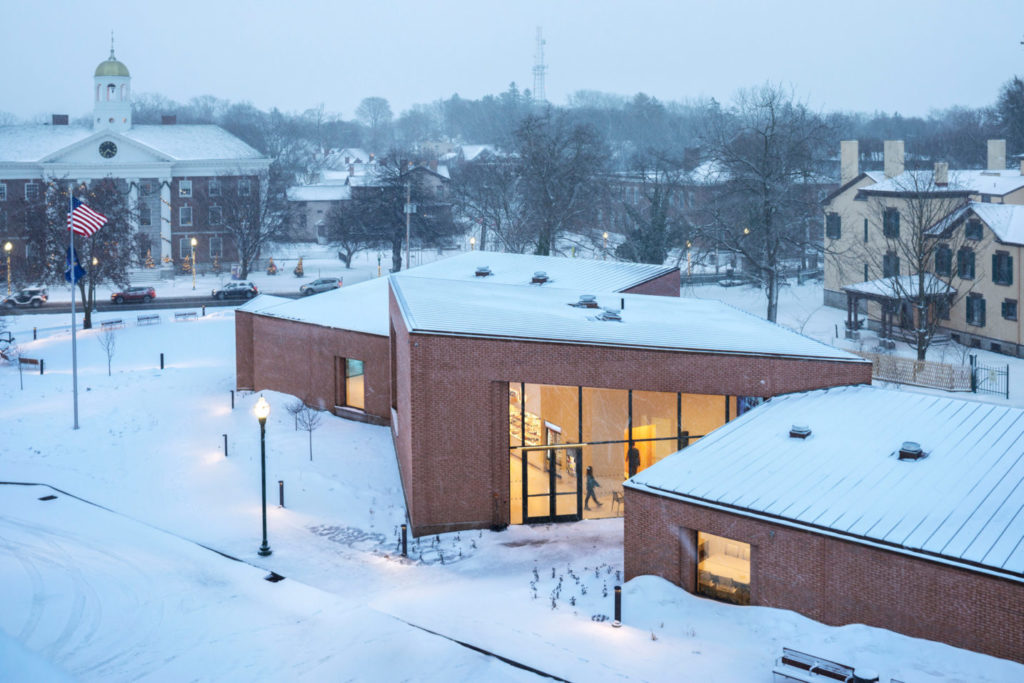Have you ever wondered why steel windows are increasingly becoming the go-to choice for architects and builders across various climates?
Selecting the right windows for your project isn’t just about the aesthetic appeal; it’s about performance, durability, and energy efficiency. Steel windows, with their robust build and sleek design, offer a versatile solution that can withstand the test of time and weather conditions. Whether you’re dealing with the biting cold of the north, the humid heat of the tropics, or the salty breezes of coastal areas, steel windows provide an answer to many architectural challenges.
Understanding the Basics of Steel Windows
Steel windows have long been celebrated for their durability, strength, and timeless aesthetic appeal. But what exactly makes them stand out in the realm of architectural design, especially when compared to other materials like wood, aluminum, or vinyl?
The Unique Attributes of Steel Windows
- Strength and Durability: Steel is renowned for its exceptional strength, allowing for slimmer frames and larger panes of glass panes, maximizing natural light while maintaining structural integrity. This makes them an ideal choice for both interior and exterior applications where durability is a key concern.
- Aesthetic Versatility: From traditional to modern designs, steel windows offer a sleek and elegant look that can be customized to fit any architectural style. Their ability to be painted or treated with various finishes means they can easily adapt to any design palette.
- Energy Efficiency: Modern steel windows come equipped with energy-efficient features such as thermal breaks and double or triple glazing, significantly reducing energy costs by minimizing heat gain and loss. This makes them not just a stylish choice but a practical one for energy-efficient homes.
Steel vs. Other Materials
| Material | Durability | Aesthetic Flexibility | Energy Efficiency | Maintenance |
|---|---|---|---|---|
| Steel | High | High | High | Low |
| Wood | Medium | High | Medium | High |
| Aluminum | High | Medium | Medium | Low |
| Vinyl | Low | Low | High | Low |
- Wood: Offers natural beauty but requires regular maintenance to prevent rot and warping. Wood frames can insulate well but typically don’t match the slim profile that steel can provide.
- Aluminum: While strong and low-maintenance, aluminum frames generally lack the thermal efficiency of thermally broken steel frames unless they are specially treated.
- Vinyl: Known for good insulation and low maintenance, vinyl windows, however, lack the strength and aesthetic versatility of steel and can degrade under extreme weather conditions.
Steel windows, with their blend of functionality and design flexibility, stand out as the superior choice for those seeking to balance performance with aesthetics.

Performance of Steel Windows in Various Climatic Conditions
The true test of any building material is its ability to perform under the specific challenges posed by local climates. Let’s explore how steel windows measure up in different environmental conditions.
Cold Climates
In areas known for cold winters, the key concerns are insulation and preventing heat loss. Steel windows equipped with thermal breaks and triple glazing can provide better insulation, keeping homes warm and reducing heating costs. The thermal break acts as a barrier, minimizing heat transfer between the interior and exterior, ensuring a comfortable temperature inside your home despite the freezing temperatures outside.
Hot and Humid Climates
Heat and humidity are the main adversaries in tropical climates. Here, steel windows with low-E glazing and special coatings can reduce energy consumption by reflecting solar heat gain back outside, keeping the interior cool without overworking the air conditioning. Additionally, the ventilation benefits of operable casement or awning windows can help manage humidity levels, ensuring a comfortable living environment.
Coastal Zones
Coastal environments pose unique challenges, including corrosion from salt air and high winds. Steel windows that are designed to withstand these conditions often feature protective coatings and stainless steel hardware, enhancing their durability and longevity. Their ability to withstand high winds and impact makes them an excellent choice for homes in hurricane-prone areas.
Arid and Desert Climates
Extreme heat and sun exposure characterize these regions, making solar control a priority. Steel windows can be outfitted with solar control glass and coatings that minimize heat gain while allowing for ample natural light. This helps in keeping the interior cool and reducing reliance on cooling systems, thereby saving on energy bills.
By understanding the specific needs of each climate, architects and builders can make informed decisions when selecting windows. Steel windows, with their wide range of customizable options, offer solutions that not only meet but exceed these requirements.

Understanding the Basics of Steel Windows
Steel windows have long been celebrated for their strength, durability, and slim profiles, allowing for more natural light penetration than their wood or vinyl counterparts. But what exactly sets them apart in the realm of construction materials?
The Unique Qualities of Steel Windows
- Durability: Steel’s inherent strength allows for window frames that are not only slim and aesthetically pleasing but also incredibly durable. They can withstand high winds and extreme weather conditions, making them ideal for nearly any environment.
- Aesthetic Flexibility: With the ability to be shaped into various styles, steel windows offer architects and builders the freedom to design without the limitations often found with other materials. Whether it’s a sleek, modern look or a classic, traditional feel, steel windows can be crafted to meet any aesthetic requirement.
- Energy Efficiency: Through advancements in technology, steel windows now feature thermal breaks and glazing options that significantly improve their insulation properties. This means that, despite the metal’s conductive nature, modern steel windows and doors can be part of an energy-efficient design, reducing energy costs and enhancing comfort within the space.
Comparison with Other Materials
When compared to aluminum, wood, or vinyl, steel windows offer a superior balance of durability and design flexibility. While aluminum may rival steel in terms of strength, it doesn’t offer the same thermal performance without extensive treatments. Wood and vinyl, though excellent insulators, lack the long-term resilience and sleek profiles that steel provides. This makes steel windows a standout choice for those looking to combine energy-efficient performance with lasting durability and style.
Design Considerations for Steel Windows in Different Environments
Designing with steel windows involves more than just selecting a frame and pane. It’s about understanding how a window integrates into the broader architectural vision, especially concerning climate and environmental conditions.
Aesthetic Integration
Steel windows offer unmatched versatility in design, allowing architects to create spaces that are both functional and visually appealing. Whether the goal is to maximize natural light while reducing heat gain or to achieve a particular historical look with modern performance standards, steel windows can be customized to meet these needs.
- Regional Architecture: In designing for a specific climate, steel windows can be tailored to reflect regional architectural styles, from sleek and modern urban facades to rustic country homes.
- Customization Options: The ability to customize steel windows – from the shape and size of the casements to the finish and color – enables builders and architects to match any aesthetic requirement, ensuring that the windows enhance the overall design of the building.
Functional Requirements
Beyond their appearance, steel windows must meet the functional demands of the environments they occupy. This includes considerations for security, noise reduction, and energy efficiency.
- Security Features: In areas prone to high winds or other extreme conditions, steel windows’ strength provides an added layer of security, offering peace of mind to homeowners and business owners alike.
- Noise Reduction: For buildings in urban areas or near busy streets, the superior insulation properties of steel windows can help reduce outside noise, creating a quieter, more peaceful interior space.
- Energy Efficiency and Sustainability: With the growing emphasis on sustainable building practices, steel windows equipped with energy-efficient glazing and coatings can significantly reduce energy costs and carbon footprints, making them an excellent choice for green building projects.
Sustainability and Energy Efficiency
Steel’s recyclability and the energy-efficient features of modern steel windows, like low-E glazing and argon or krypton gas fills between panes, contribute significantly to sustainable building standards. By enhancing thermal performance and reducing reliance on heating and cooling systems, steel windows play a crucial role in creating environmentally friendly buildings that are not only cost-effective but also comfortable year-round.
Installation and Maintenance Best Practices
For steel windows to perform at their best, proper installation and maintenance are key, regardless of the climate you live in.
Proper Installation for Climate Resilience
- Professional Installation: Ensuring that steel windows are correctly installed is crucial for maximizing their performance, particularly in terms of insulation and weather resistance. Professional installers can ensure that windows are sealed correctly to prevent air and water leaks, which are vital for maintaining energy efficiency.
- Sealants and Weatherstripping: Using the right sealants and weatherstripping materials can enhance the insulation properties of steel windows, further improving their energy performance and comfort levels inside the building.
Maintenance Strategies Across Different Climates
- Regular Inspection and Maintenance: To extend the lifespan and maintain the performance of steel windows, regular inspections are necessary. This includes checking for signs of wear and tear, ensuring moving parts are lubricated, and replacing weatherstripping as needed.
- Cleaning and Protective Measures: Keeping steel windows clean and free from debris not only preserves their appearance but also prevents issues like rust and corrosion. In coastal or humid climates, applying protective coatings can help combat environmental stresses, ensuring that the windows remain in top condition.
Conclusion
Steel windows offer a unique combination of durability, aesthetic flexibility, and energy efficiency, making them a superior choice for a wide range of architectural projects across different climates. From the cold blasts of northern winters to the intense heat of desert landscapes, steel windows provide the performance, style, and sustainability that today’s architects and builders demand.
By considering the specific needs of the project’s environment, utilizing the design and customization options available, and adhering to best practices for installation and maintenance, steel windows can significantly enhance the functionality and appeal of any building.



